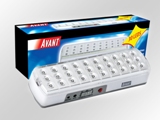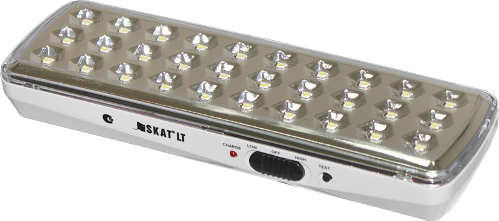How emergency lighting works and works
 Today, unexpected power outages can not only disrupt the usual life of the resident, but also completely paralyze various industries and the work of important institutions, including medical. Interruptions in the supply of light in tunnels, hospitals, factories can lead not only to economic damage, but also to human casualties.
Today, unexpected power outages can not only disrupt the usual life of the resident, but also completely paralyze various industries and the work of important institutions, including medical. Interruptions in the supply of light in tunnels, hospitals, factories can lead not only to economic damage, but also to human casualties.
In order to eliminate the most unpleasant consequences, emergency light sources are always installed in such facilities. In the event of malfunctions related to the main lighting, the operation of the emergency lighting will allow evacuation in an emergency situation, maintaining the necessary amount of light for several hours.
Emergency lighting is subdivided into backup and evacuation lighting. Backup lighting is necessary to safely complete work processes in the event of a sudden power failure, which is especially important for hazardous industries.Evacuation lights are signs of escape routes, sources to illuminate highly dangerous areas and open light sources to prevent panic. Read more about it here: Emergency lighting
They are the most efficient and economical LED emergency lights, which have recently become very popular as light sources in emergency lighting systems. Such lighting fixtures are not only economical, but also safe.

Unlike conventional lighting fixtures, emergency LED lighting fixtures contain in their design a battery and an additional driver to power the LEDs in the event of an emergency directly with energy from these batteries. When the light fixture is switched on for the first time, the batteries need to be charged, which sometimes takes up to 48 hours. In the event of an accident, the battery charge will be sufficient for at least three hours of lighting in economy mode, although according to the rules of electrical installations, emergency lighting requires only 1 hour of operation.
Batteries can be nickel-metal hydride or lithium, depending on the model of the lighting unit. In any case, the life of the battery will be sufficient for repeated emergency operation of the luminaire during its entire service life. But before using the lamp, as well as once a year, you should check the operation of the device by completely discharging the battery.
A preventive check is carried out as follows: the power supply is turned off from the lighting fixture so that it goes into emergency lighting mode, and the batteries are completely discharged within three hours or more.After the batteries are discharged, the lighting unit is connected to the mains again in normal mode. If the batteries do not meet the requirements, they must be replaced.
It is clear from the above that the emergency lighting unit can work both in normal mode, simply as a lighting device, and in emergency mode. There are lamps that in emergency and normal mode have different light intensity, for example 3 watts in emergency mode and 15 watts in normal mode, again depending on the specific model.

In one way or another, all emergency lighting fixtures contain, in addition to the standard electronics, a set of batteries, a driver for powering the LEDs from batteries and a charging driver that automatically charges the batteries in case of incomplete charging and monitors their voltage level so that in case of an emergency, an object without light does not remain.
